From the safety and efficacy of current and emerging therapies to new information on treatment targets, Tuesday’sPlenary Session III will feature a series of abstract presentations covering cutting-edge clinical and basic science research results. The session will be held from 11:00 am – 12:30 pm in Room W375c.
Efficacy and Safety of Ustekinumab, an Interleukin-12/23 Inhibitor, in Patients with Active Systemic Lupus Erythematosus: 1-Year Results of a Phase 2, Randomized Placebo-Controlled, Crossover Study

This phase II clinical trial was designed to determine if the anti-IL12/23 monoclonal antibody ustekinumab could be an effective and safe treatment for systemic lupus erythematosus (SLE). Patients with active SLE were randomized to receive ustekinumab or placebo on top of stable standard-of-care therapy for 24 weeks, followed by continued treatment with ustekinumab for all patients. The primary outcome of the trial was the SLE Responder Index (SRI) after 24 weeks of treatment.
“This widely used outcome for SLE trials was achieved by significantly more patients on ustekinumab than on placebo (62 percent versus 33 percent). Other outcomes also showed differences favoring ustekinumab,” said Ronald van Vollenhoven, MD, PhD, Professor and Chief of the Department of Clinical Immunology and Rheumatology at Amsterdam University Medical Centers, and Director of the Amsterdam Rheumatology and Immunology Center, the Netherlands.
“Of the patients who switched over from placebo to ustekinumab, a sizeable proportion also achieved the SRI response,” he said. “I think the results of this trial are very encouraging and suggest that ustekinumab could be an effective treatment for SLE.”
Prospective Multicenter Validation Study of the Lupus Low Disease Activity State — A Treatment Target for Systemic Lupus Erythematosus

In this large, multinational prospective cohort study, investigators sought to define and validate a Lupus Low Disease Activity State (LLDAS) as a treatment target for SLE. They followed 1,735 SLE patients for a mean of 2.2 years, totalling 12,717 patient visits.
The researchers found that LLDAS was achieved in just over half of all visits (55 percent), with the majority of patients (78 percent) being able to attain LLDAS on at least one occasion, according to Vera Golder, MBBS, BMedSc, FRACP, Lecturer and Research Fellow in the School of Clinical Sciences at Monash University and Rheumatologist at Monash Health in Melbourne, Australia.
Dr. Golder also reported that patients who spent at least half of their observed time in LLDAS had a significant reduction in risk of disease flare and damage accrual, and patients who were able to remain in LLDAS for at least 12 months had an almost 90 reduction in risk of damage accrual.
“Our results suggest that aiming to achieve and maintain LLDAS in clinical practice has the potential to vastly improve outcomes for lupus patients, and use of LLDAS as an endpoint in clinical trials may change the landscape of available therapies,” Dr. Golder said.
−21 HLA-Class I Dimorphism Differentiates Psoriatic Arthritis (PsA) from Psoriasis without Psoriatic Arthritis (PsC)

The mechanisms for the development of psoriatic arthritis (PsA) in patients with psoriasis remain largely undefined. Risk loci in MHC (HLA Class I) region provide the most significant genetic risk for psoriasis and PsA, said Vinod Chandran, MBBS, MD, DM, PhD, Affiliate Scientist at the Krembil Research Institute, University Health Network, Associate Professor at the University of Toronto, and Adjunct Professor at Memorial University of Newfoundland in Canada.
In this study, Dr. Chandran and his colleagues wanted to determine if functional dimorphism of the leader sequence of HLA-A, HLA-B, and HLA-C (methionine at position −21M [-21M] versus threonine [-21T]) that specifically binds to the binding site of HLA-E and is important in natural killer (NK) cell education differs between patients with psoriasis without PsA (PsC) and PsA.
“We found that patients with PsA have higher prevalence of -21M carrying HLA Class I alleles compared to those with PsC,” Dr. Chandran said. “Our results indicate a potential role of NK cells in PsA pathogenesis, and may provide a possible diagnostic test to discriminate PsA from PsC or a possible therapeutic target to be exploited.”
The Effects of Plasma Exchange and Reduced-Dose Glucocorticoids During Remission-Induction for Treatment of Severe ANCA-Associated Vasculitis

The PEXIVAS trial sought to determine if plasma exchange (plasmapheresis) is an effective treatment for severe ANCA-associated vasculitis (AAV) and whether patients with severe AAV can be treated with a lower cumulative dose of glucocorticoids.
“Our results demonstrated that the addition of plasma exchange to treatment with glucocorticoids and other standard immunosuppressive agents does not improve the outcome of patients with severe ANCA-associated vasculitis, in regards to avoidance of end-stage renal disease or mortality,” said Peter A. Merkel, MD, MPH, Chief of Rheumatology and Professor of Medicine and Epidemiology at the University of Pennsylvania in Philadelphia and one of the trial’s principal investigators.
Study results also suggest that patients with severe AAV can be treated with a substantially lower cumulative dose of glucocorticoids and still have the same level of disease control and experience fewer serious infections.
“Based on these findings, physicians should strongly reconsider the utility of plasma exchange as a treatment for AAV patients, and should now consider using lower cumulative doses of glucocorticoids for the treatment of severe AAV,” Dr. Merkel said.
Efficacy of Apremilast for Oral Ulcers Associated with Active Behçet’s Syndrome over 28 Weeks: Results from a Phase III Study

This phase III, multicenter placebo-controlled study sought to determine if apremilast is effective and safe for treating oral ulcers associated with active Behçet’s syndrome. Adult patients with active Behçet’s syndrome (defined by ≥3 oral ulcers at randomization or ≥2 oral ulcers at screening and at randomization without active major organ involvement) were randomized (1:1) to placebo or apremilast 30 mg twice daily for 12 weeks. All patients then received apremilast treatment through week 64.
“Apremilast treatment resulted in a significantly lower number of oral ulcers and reduction in oral ulcer pain compared with placebo at every visit from week 1 through week 12,” said Gulen Hatemi, MD, Professor in the Division of Rheumatology at Istanbul University – Cerrahpasa, in Turkey. “Further, apremilast efficacy was sustained with continued treatment through 28 weeks.”
Regarding safety, the researchers report that the incidence of any adverse event was comparable between apremilast and placebo during the placebo-controlled period, with no new safety concerns further identified during the active treatment phase, findings consistent with the known safety profile of apremilast.
Screening of Patients with Adult-Onset Idiopathic Polyarteritis Nodosa for Deficiency of Adenosine Deaminase 2

While polyarteritis nodosa (PAN) has been causally linked to chronic hepatitis B virus infection in a subset of patients, the underlying cause of idiopathic PAN is still unknown in the majority of patients.
“Recently, the genetic disorder deficiency of adenosine deaminase 2 (DADA2) was described where affected individuals present with similar clinical and histological disease features as patients with idiopathic PAN, including vasculitis of medium-sized arteries,” said Oskar Schnappauf, PhD, Post-Doctoral Researcher at the National Human Genome Research Institute, National Institutes of Health, in Bethesda, MD.
The objective was to screen a large cohort of patients with idiopathic PAN for potential mutations in ADA2 in order to determine the prevalence of DADA2 in patients with presumed idiopathic PAN. All patients were enrolled in the observational cohort studies of PAN conducted by the Vasculitis Clinical Research Consortium.
“Our findings suggest that a subset of patients with presumed idiopathic PAN can be reclassified with a new disease entity, which has an important impact on the treatment chosen for these patients,” Dr. Schnappauf said. “Given the potential differences in approaches to treatment, clinical follow-up, prognosis, and consequences for other family members, our findings indicate that ADA2 testing should be performed in patients with HBV-negative idiopathic PAN, especially in patients with early onset of this potentially life-threatening disease.”
